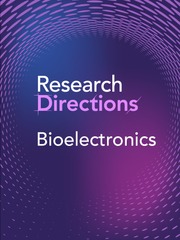Context
Neuromorphic computing is an approach to computing that is inspired by the structure and function of the brain. In terms of basic research, it aims at improving our understanding of biological intelligence by replicating aspects of its physical substrate – spiking neurons, synaptic plasticity etc. – and harness them towards also replicating its function. With respect to technological advances, it aims to inherit the brain’s combination of computational prowess and extreme energy efficiency; this is thought to foster a plethora of applications, from large-scale neuromorphic systems for machine learning to small-scale edge devices for signal processing and control, for example in the form of wearables for healthcare or adaptive sensors/processors for autonomous agents. The demand and usefulness of neuromorphic computing in bioelectronics is likely to increase in the future as researchers continue to explore its capabilities and develop new applications.
We think this potential deserves to be discussed critically. We propose to query the impact of neuromorphic engineering on (computational) neuroscience and to scrutinize the proposed advantages for future electronic devices. To what extent have these goals been achieved in the past and which of them are realistically achievable in the foreseeable future?
-
1. What can be learned from small silicon brains about their carbon archetype?
-
2. What are the relevant dynamics of computation in the brain that justify porting them to hardware?
-
3. What types of computation can benefit (with respect to any of several relevant metrics such as output quality, precision, speed, energy efficiency etc.) from these dynamics?
-
4. For which specific applications can neuromorphic systems outrank conventional von-Neumann machines?
-
5. Are there advantages of outsourcing some computation (either sensing or processing) to biological neuronal substrates, i.e., of having hybrid, bio-synthetic systems?
In short, we are searching for explicit cases of “neuromorphic supremacy”, either as a research tool for neuroscience or as a computing substrate for end-user applications.
How to contribute to this question
If you believe you can contribute to answering this Question with your research outputs find out how to submit in the Instructions for authors (https://www.cambridge.org/core/journals/research-directions-bioelectronics/information/author-instructions/preparing-your-materials). This journal publishes Results, Analyses, Impact papers, and additional content such as preprints and “grey literature”. Questions will be closed when the editors agree that enough has been published to answer the Question so before submitting, check if this is still an active Question. If it is closed, another relevant Question may be currently open, so do review all the open Questions in your field. For any further queries, check the information pages (https://www.cambridge.org/core/journals/research-directions-bioelectronics/information/about-this-journal) or contact this email ([email protected]).
Competing interests
The authors declare none.



